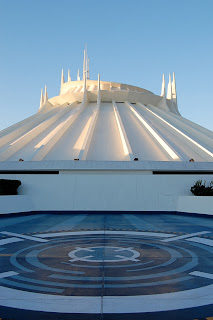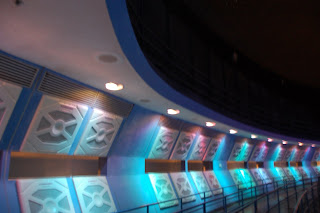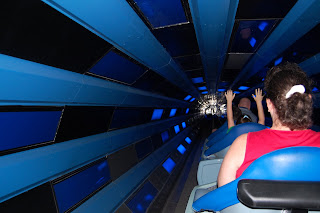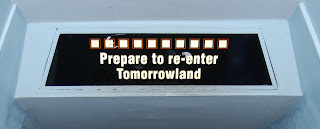Discoveryland at Disneyland Paris draws inspiration from the futuristic predictions of several visionaries of the past, but none more so than Frenchman Jules Verne. Standing majestically at the center of the land is Space Mountain, based on Verne's 1865 novel, "From the Earth to the Moon."
Space Mountain: De la Terre à la Lune opened in 1995 and introduced two major "firsts" for Disney Parks coasters. It was the first to include multiple inversions and the first to feature synchronized on-board audio. In 2005, the attraction was updated to Space Mountain: Mission 2, taking Guests beyond the Moon to the far reaches of the universe with all new special effects and a new soundtrack composed by Michael Giacchino.
Although the story of Space Mountain has expanded over the years, many of the details remain the same. In fact, in some places throughout the queue you can still see emblems with the initials "DM" for Discovery Mountain, the name intended for the attraction until right before it opened.
In Verne's story "De la Terre à la Lune," representatives from the Baltimore Gun Club build an enormous cannon to launch themselves from the Earth to the Moon. The cannon itself, named "Columbiad," is a major architectural element of Space Mountain, extending more than 70 feet along the exterior of the structure. The detailing on "Columbiad" is magnificent... and so is the scale. To give you an idea, an average size person would only stand eye-level with the words "Gun Club" on the side of the base. High above and resplendent in gold is Columbia herself, a feminine personification of the United States, her arrow poised to shoot for the stars.
The main hall of the Baltimore Gun Club is where we board the rocket for our mission to outer space. Our goal is the future, but the setting is firmly in the Victorian past, contained within a massive, riveted iron structure.
Our rocket rolls into place in the barrel of "Columbiad," and we wait breathlessly for launch. A puff of smoke, a thrust of energy and we're off!
We blast up and into Space Mountain, past the Moon toward encounters with a comet and an asteroid field. Ultimately, we reach the supernova that is our destination, only to have it explode before our eyes. In a flash of red, a hypergate opens a shortcut for our safe return to Earth, where we might be inspired to pursue other adventures in Discoveryland.



























































